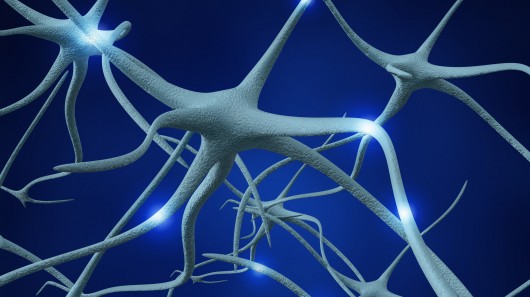
Chronic pain a leading cause of disability nationwide, affecting more Americans than cancer, diabetes, and heart disease combined. But in a new study, researchers from Saint Louis University and the National Institutes of Health (NIH) have discovered an “off switch” for pain, potentially paving the way for more effective treatments.
The study, led by SLU professor of pharmacological and physiological sciences Dr. Daniela Salvemini, is published online ahead of print in the journal Brain.
Chronic pain is a complex problem with significant consequences for individuals and society. As an unmet medical need, pain causes suffering and comes with a multi-billion dollar societal cost. However, many current treatments are problematic because they cause intolerable side effects, diminish quality of life, and do not sufficiently quell pain.
“The most successful pharmacological approaches for the treatment of chronic pain rely on engagement of endogenous circuits involving opioid, adrenergic and calcium channel mechanisms,” the researchers note.
For the past decade, scientists have tried to take advantage of these known pathways – the series of interactions between molecular-level components that lead to pain. While past studies have shown that a drug called adenosine may be effective for pain relief in humans, the medication activates an array of circuits, or “pathways,” causing a number of side effects.
It has been unclear as to which specific pathway mediates the pain-relieving effects of adenosine, so Dr. Salvemini and her team wanted to find out.
Activation of A3 receptor with adenosine molecule prevented, reversed chronic pain
For the study, the researchers analyzed more than 300 rodent models of chronic neuropathic pain, or pain that results from nerve damage.
They found that activating a receptor in the brain called A3 halted or reversed chronic pain in the rodents, and that this receptor could be activated by a small adenosine molecule and other small-molecule medication created by the National Institutes of Health.
What’s more, activating the A3 receptor with a small adenosine molecule did not alter the normal pain threshold in rodents or trigger the reward center of the brain — a process that can lead to addiction with opioid use.
“It has long been appreciated that harnessing the potent pain-killing effects of adenosine could provide a breakthrough step towards an effective treatment for chronic pain,” notes Dr. Salvemini. “Our findings suggest that this goal may be achieved by focusing future work on the A3 adenosine receptor (A3AR) pathway, in particular, as its activation provides robust pain reduction across several types of pain.”
The authors note that A3AR agonists — drugs that activate the A3AR pathway — are already undergoing clinical trials for treatment of inflammation and cancer, and, as demonstrated in this study, the drugs have caused no serious side effects so far.
“These studies suggest that A3AR activation by highly selective small molecular weight A3AR agonists – such as MRS5698 – activates a pain-reducing pathway supporting the idea that we could develop A3AR agonists as possible new therapeutics to treat chronic pain,” adds Dr. Salvemini.
